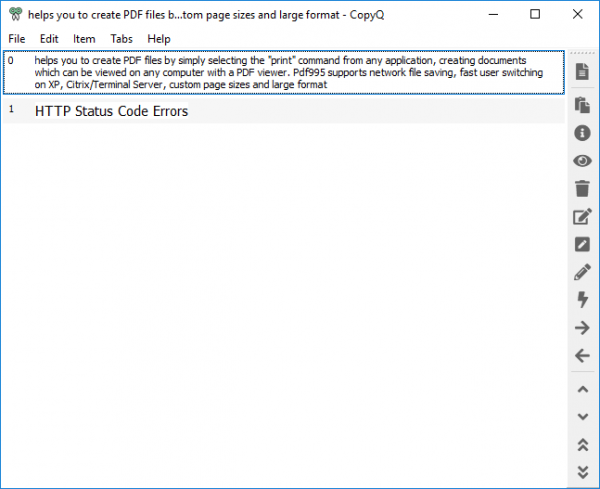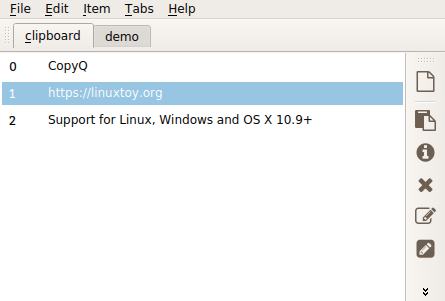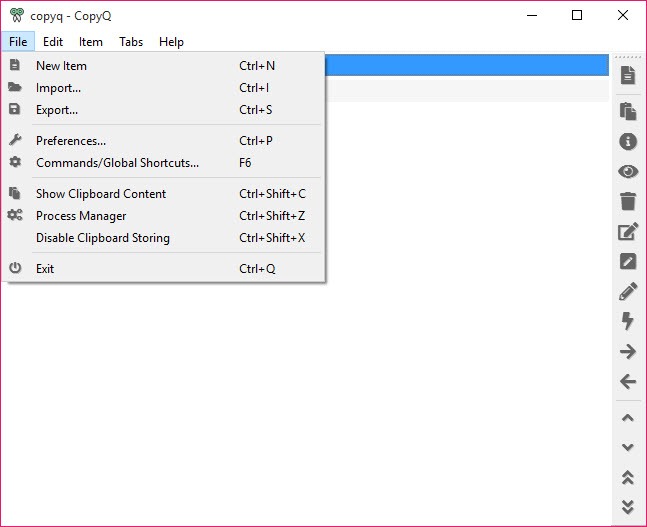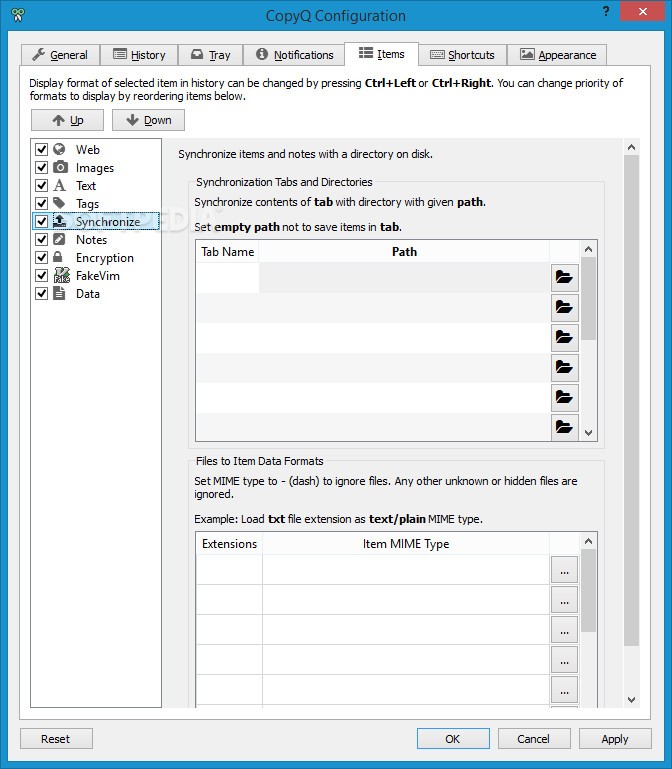

More shortcuts and even sequences of shortcuts can be now captured and assigned.var sel = ItemSelection().selectAll() const texts = sel.itemsFormat(mimeText) sel.sort(function(i,j)).Items can be sorted with a custom order via scripting.Items in menu can be additionally filtered using the item notes (#2170).
#Copyq for windows install
To install CopyQ, use the binary package or installer provided for your system.Support for simple Vim-like editor and shortcuts.
#Copyq for windows windows
Ignore clipboard copied from some windows or containing some text.Advanced command-line interface and scripting.Paste items with shortcut or from tray or main window.System-wide shortcuts with customizable commands.Sort, create, edit, remove, copy/paste, drag'n'drop items in tabs.Quickly browse and filter items in clipboard history.

Store text, HTML, images or any other custom formats.Support for Linux, Windows and OS X 10.9+.Saved clipboard can be later copied and pasted directly into any application. Worth a look if you need its advanced functionality, scripting support and so on, but be prepared for a steep learning curve.CopyQ monitors system clipboard and saves its content in customized tabs.
#Copyq for windows how to
Unfortunately, its interface and documentation hasn't kept up, and figuring out how to apply its many features is a real challenge. Verdict:ĬopyQ is probably the most powerful and versatile clipboard manager we've ever seen. But if you just want a clipboard history, move on - there are simpler and more straightforward tools elsewhere. If you really need its power, then grab a copy and start exploring. It has a command to open a URL, for instance, but this doesn't use the default Windows browser instead it tries to launch curl, failing if you've not installed it.ĬopyQ is still an impressive program. And there's vanishingly little documentation to point you in the right direction.ĬopyQ's Windows build isn't exactly optimised for its environment, either. Core concepts aren't clear (we imagined we'd be able to manually organise items into different tabs - but no). The official document gives this, for example, as a way to print all the items in a particular tab:Ĭopyq eval - "tab('notes') for(i=size() i>0 -i) print(str(read(i-1)) + '\n') "

What's more, all of this can be manipulated from the command line, to an astonishing level of detail. Creating a custom command, for example, isn't just a matter of specifying "program.exe %1" the Commands dialog has 17 options which you can tweak. Other programs might have one or two customisable hotkeys to control their main actions CopyQ has 38 (which alone tells you just how much it can do). You also get a huge amount of configurability.

There's even a built-in "commands" system which allows them to be processed, on demand or automatically: you can have items encrypted or decrypted, opened in a browser, launched in a media player, pasted as plain text, saved as a thumbnail or QR code, and a whole lot more. Individual clipboard items may be edited. You can drag and drop items around, delete elements you don't need, sort all (or just some) of the items, even organise them into tabs. The clipboard history isn't fixed, though. It lives in the system tray in a click or two you can be viewing a list of recent clipboard items (text or images) and any of these can then be selected or pasted into the current document. CopyQ is a tool which maintains a history of everything you copy to the clipboard, and allows you to manipulate this in various ways.Īt its simplest, the program works much like any other clipboard manager.


 0 kommentar(er)
0 kommentar(er)
